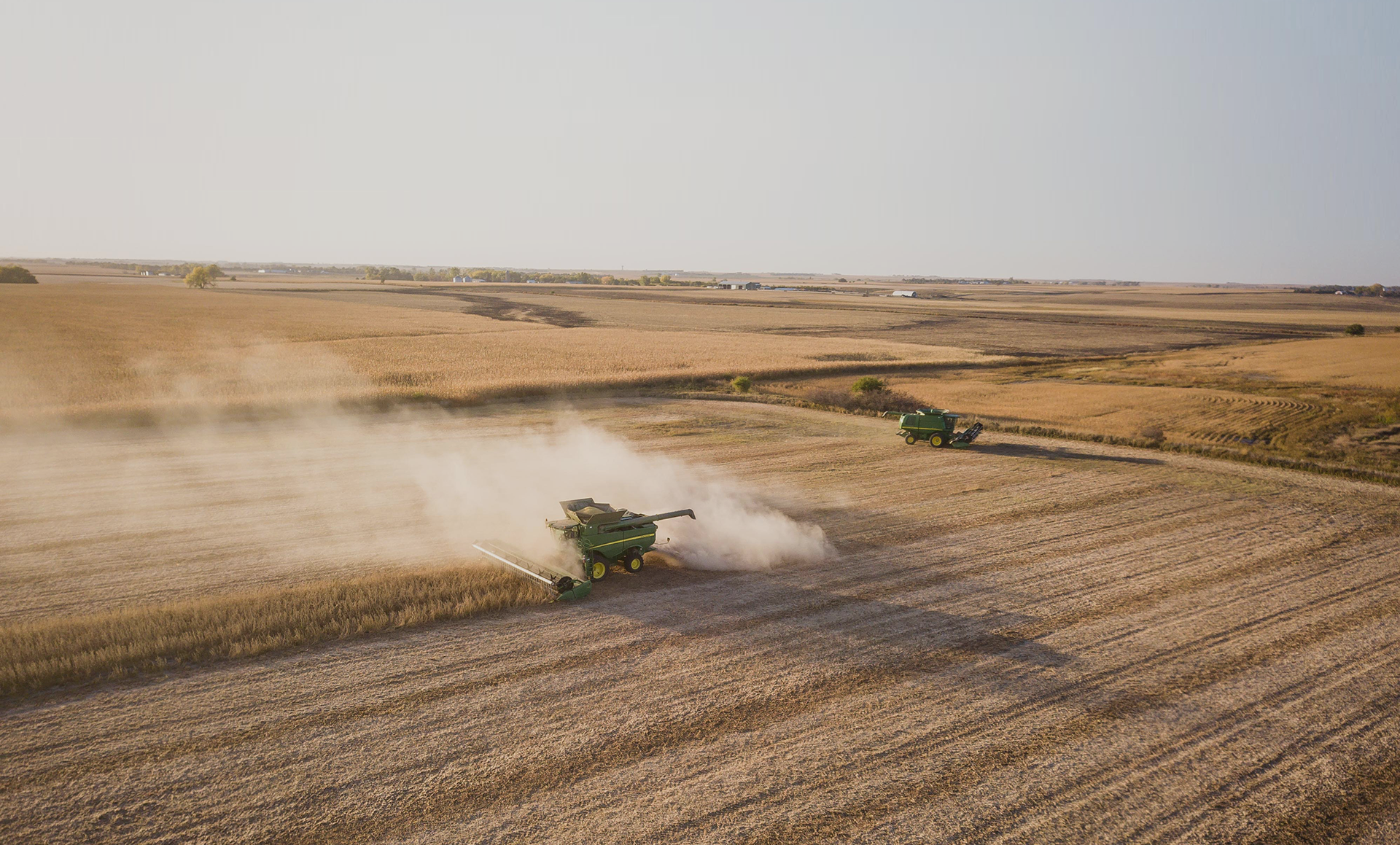The reason for talking to David is because I thought you’d be interested to know what’s going on in blockchain and to hear about a company that’s using the blockchain not in a speculative way but to actually engage in supply chain finance and use the data that’s stored on the blockchain to reduce the finance costs, which is what this company does.
It's focusing entirely at the moment on agriculture so cattle, avocados, all sorts of horticultural products. What they do is the farmers pay them to collect the data, and David will explain how that works, it goes on a blockchain and then he acts as a sort of finance broker to provide them with working capital at a much cheaper rate because of the transparency of the business. Very interesting and the purpose, as I say, of talking to him was to give you an understanding of a real world example of a company that’s using blockchain in a practical way.
David, can you explain to us in simple terms what you do?
Fresh Supply Co was founded almost four years ago and what we do is we have visibility down at the operational layer primarily focussing on the agri-business sector but also the wider food and commodity sectors as well. Our expertise is in integrating and capturing the information around whatever the commodity is or product that’s being produced whether it’s cattle, skinny cow becoming a fat cow, value adding, etc., we understand how to get that information and sort of shape it into a narrative of the asset.
What information are we talking about, say with cattle, what exactly is the information you capture?
Where the assets have come from, its genetics, where it’s gone to, where it was purchased from, are they yielding as they should be, meaning do they have a high mortality rate. Ultimately when they’re killed and processed did they meet the specification or are they performing poorly. That’s typically a black box that’s almost proprietary information around how functional, how efficient, how well a company is operating so that’s not really been a publicly available source – it’s been more of an outside looking in versus the information that we’re capturing is really data that’s used day in, day out for people that are making decisions in the business, for example, how much do I have in inventory , what’s the quality of that, what should I pull and where should I ship it.
To be able to leverage that information and then apply it to okay, based on what I know about this sort of product, this sort of sector and what should be happening in the business, how well is it going.
Are your clients the farmers or the buyers of the produce?
Typically, they’re the producers but there’s also aggregators and commodity traders on down the line. We are also going from a direct acquisition model with kind of mid-sized businesses, say turnovers of anywhere from $70 million to $300 million to partnering with other large aggregators in the market, so being able to create new data driven financial products basically.
The data that you collect is put on a blockchain, right?
Correct, so that’s the other side of the coin, there’s two parts. Number one is it’s high quality information that it’s in no one’s best interest to fake, right. Then we have to be able to understand it, what’s the story and how should whatever the asset or business should be performing. Then on top of that there’s the integrity piece, so what is the reference set around how this business performed, the cohort of assets going in and out and what can I infer as to functional health. Again, right now our customers are primarily mid-sized producers but in the future it is highly likely, and it’s starting to happen, that some of our customers will be lenders, both traditional and non-bank sort of institutions that want to use information to de-risk their funding capability.
What do your producers and customers get out of it, what do they use your service for?
Less secured, more flexible access to working capital and operational sort of capital.
If their data is transparent it means that they’re more able to borrow money?
You bet, I don’t want to get myself in trouble but probably between 15 per cent to 20 per cent savings on working capital versus the market in a like-for-like comparison so it’s significant. Someone that’s saving 20 basis points, this is a real customer – sorry, not 20, 200 basis points on $70 million worth of flows was net positive 1-3 after my costs.
Do you provide the finance as well?
We facilitate the financing off the back of the data from a range of different pools of capital, whether that’s banks and we’ve done that with CBA in the horticulture space, non-bank lenders as well as what we’re going to talk about today, de-fi, pools of digital assets that are typically locked or hard to get to that are looking for – just like any investor, looking for yields on their capital.
Let’s talk about de-fi, decentralised finance, which is using one of the cryptocurrency blockchains like Ethereum or Solana.
There are a range of different protocols, there’s two majors, we’d call it a technical term or a community term would be Maxi, right, so if your Bitcoin and your Ethereum – Ethereum has gotten a lot of, I wouldn’t say, well, maybe notoriety. It’s sort of the utility token that’s traded in and out of and off the back of that. We’ve seen things like token issuances and NFTs and all that sort of stuff. There are two majors in the space and there are other challenges, I’d say Solana and Polygon, etcetera, those kind of compete more in the Ethereum space. Things that are used for utility moving in and out of quite frequently whereas Bitcoin is more akin to gold, especially the institutional and its buying and holding.
Rather than being a pure victim of the market we saw about a drop in 20 per cent of value last week, really how can institutional and others who have participated and what the potential of the upside as well, actually getting yield on their capital, that’s what we have been and are figuring out. I could talk more about the structure of the trade and how you do it but really being able to take the volatility – why don’t I just give you an example of what’s inappropriate for business and business funding? If I have an invoice that’s say $800,000 today, that it would be worth $1.2 million tomorrow and then $550,000 the day after.
Now, I’m being facetious but that was the sort of immaturity and volatility that has made it difficult for these investors holding these assets, it’s just Bitcoin, in effect digital gold, holding these assets to be able to get a yield on them and that’s the problem we’re solving because of what we do. Really if I am to recap we sit on the operational side, we have visibility and use that data around what’s going on in the business to benefit the business with more flexible funding, for a lender – for them to know that based on information that’s used by the guy that’s pulling stock and sending stuff out the door and making sure it gets shipped, we leverage that information as a new source for us to actually – if we know you’re functionally healthy you’re less of a risk, and that’s continuous.
We’re not talking about six and 12 months down the road when someone misses their interest payment or defaults, we’re getting these feeds all the time continuously.
It sounds like what you are fundamentally is a finance broker that uses data on the blockchain.
You could look at it like that. I would say we are experts on the data side, acquiring the data and then providing that.
Do you make any money from just pure data is all your money being made from broking finance?
Where we make our money is purely off the data, we’re not a lender, we partner with various lenders. We’re the comfort, we’re the visibility and we’re the guys that trigger the payments based on objective criteria.
You don’t get a commission from the loans?
It’s more a facilitation fee, we live on the data side.
What do you get paid for the data? What are people paying for, they’re paying for access to the blockchain, is that right?
They’re paying for access, so if you give us your data we do the work in making sense of it and based on our network of providers, so we work very closely with Mastercard and through our network of banks, non-banks and de-fi sort of lenders they can access affordable finance.
In fact, you use the MasterCard Provenance blockchain, I didn’t even know they had a blockchain.
Yeah, we have used a range of different blockchains from private to public and what we really liked about MasterCard was just like you and I will go to 7 Eleven or Coles or Woolies and we’ll tap and pay, that speed, scalability, security of financial systems is what we really liked as well as native payment capability. Really what we do is a blending of three things. Number one, data, information, tell me about how this business is going. Then the other pieces which are payments and lending. We don’t need to use Swift, we can disburse to a wallet, it can be however you want so there’s payments and lending coupled together.
The lender plays their part, payments is tightly integrated to the data and the triggering of it, so we’re good at again using operational data but then triggering a financial outcome which is the payment and that’s linked to the lender who has a covenant saying if they meet this criteria we automate the lending of these sort of loans. It’s a very data rich and event driven approach to finance.
What do you think your business teaches us about the future of finance?
Just like everything things will get more connected. It’s really about the incentives. In the past rural bankers you just needed to know you had a healthy business but it was a little bit removed from do they actually need to know the starting carcass weight or the amount of yield on an animal, on an asset. In a way what we’re providing is a quantitative approach so it’s a quant approach to looking at okay how is this business doing by looking at the assets underneath.
Can the lender actually use all that data? This is sophisticated stuff, are the lenders knowledgeable enough to use it?
That’s our work, to make that useful – in effect think of it like a traffic light, red, yellow, green. Based on whatever the asset type, it could be an avocado and we do them, we’re financing the avocado industry, it could be cotton, it could be tonnes of wheat or it could be cattle that are being fatted up and going to market, then transformed into box beef. Then even downstream from that it could be wagyu that’s put in a box, it’s chilled and it’s flown in the air to Korea, Japan or China. We make it very simple, so I would say functioning as per normal or there’s been a deviation from where we think they should be. I’ll give you a very simple example. You shop at Harris Farm, right?
Assume I do.
Okay, there’s your – maybe not this year but once upon a time there was your super large avocados that cost $5 a piece, they’re your premiums, they’re sitting in a high end greengrocer. Then there’s your stuff that’s Coles and Woolies and stuff that goes to food service and then there’s the stuff that goes into guacamole, the mark down. We have the visibility, so if there’s a hailstorm and there’s an expected ratio of you’ll get this many premiums or this grower for this region typically has x amount of premiums, class ones and class twos, but we have a hailstorm and they get all marked up. As soon as those avocados are run through the machine I know that the majority of the assets, in this case avocados, whatever they may be, however many grams, they’ve gone from fetching $5 a piece potentially in retail to these are all going to guacamole and it’s going to make a huge impact on the downstream revenue coming into the business.
Being able to tighten that loop up is what we do, it’s not a financier or payments providers worry to have to interpret the data, that’s why they look to us.
You interpret it and summarise it in some way.
Yeah, we visualise it saying this could be the ratio of quality that we’re expecting for this time or this part of the year based on the type of breed of cattle, they’re yielding as per usual, they’re growing the expected rate or hey too many have died and based on where you actually have been purchasing them from, whether it’s a paddock or a sale yard. We can make it very easy.
But the producer, the avocado producer in this case, pays you to do that.
Correct.
If the data that you’re coming out with is not that great for them do they say actually we don’t want to pay for that?
Really what they’re paying for is they’re getting access to capital at a better than market rate for that industry so the value is really tangible and that’s kind of why blockchain, crypto, all that sort of stuff, there wasn’t a really clear tangible value, it’s like we’re going to save the world, we have all this information, but really there was too much and it confused you and what was the outcome? Didn’t save me money, it really added more to my cost base and that’s kind of inappropriate. What we’re seeing here is the primary kind of incentive being okay, I’ll capture my data, yes I’ve got traceability, yes I know what’s happening, that’s great. The person or lender that’s providing capital to me, greater liquidity for my working capital and operational needs is going to cut me a better deal, better than what I can get today because I’ve provided that information. That’s what we do.
I get it, so that as you say is a clear value proposition from blockchain.
Correct, yeah.
Which is cheaper lending. This presumably would translate to all businesses, not just agricultural ones.
Absolutely, and it’s not just cheaper, it’s more flexible. You look at the incumbents say in the working capital space, I do have a specific case where a client had to get a second mortgage and for the same sort of – it was slightly more expensive, our capital or the capital that we were able to provide, but they didn’t need a second mortgage. The tenor of the facility was actually flexible and in line with what they needed for the cash conversion cycles. The trend we’re really seeing is once upon a time what’s happening on the farm was a black hole, right, and you needed to have a high level of expertise to understand it or at least some knowledge.
What we’re seeing is we and just the data will tell you how they’re going, and if you share your information with us because we in effect – I’m romanticising it here, but have written the life story of the asset the cow, the tonnes, the harvest, tonnes of avocados, the harvest, etc. You will get a better deal because if I know how you’re going or if the lender knows that you’re going well and we can see the assets going through and eventually turning into money that’s the novelty, that’s the innovation.
Okay, I get it now, thanks.
It’s like a front end quant sort of service for lenders where we’ll leverage information around what’s going on in various parts of the supply chain.
It could just as easily be used in manufacturing or anything.
In fact, it’s being used in manufacturing, I can’t say too much but chemicals and automotive, it is being used in that space.
Finally tell us a bit more about what’s going on in this de-fi market?
Really, there’s a lot of value so it’s a large market so $2 to $3 trillion locked into this space and there isn’t a way to consistently get yield on that, whether it’s bitcoin or Ethereum. You’re seeing these really kind of poor quality speculative instruments, like you’re funding people’s margin trading but the ability to use that as a source of liquidity is the new trend and that is what’s happening in de-fi, to be able to get yield and that’s sort of the magic and infrastructure that we’ve developed on the payment side because you have the operational side. On the payment side what we’re doing is the ability to take that asset, lock on the spot rate, give liquidity, protect on the downside and still for any sort of investor to be able to participate on the upside.
We’re doing some interesting things there where you can get high quality yield against real world assets which is atypical for the de-fi space. That’s where the novelty is and that will be a huge source of capital funding all sorts of things and that’s where it also becomes a little bit unusual in that a lot of these are Gen Z crypto whales or crypto native investors that have nothing to do with real assets, purely speculative. There is novelty to think that you take a sort stereotypical idea of some guy locked away in his room who’s hyped up about cryptocurrency right. To think that is the financier for a massive multi-hundred mullion dollar sort of agricultural business – it’s happening now and it’s not a promise, it’s happening now because I’m the guy that’s doing it.
Thanks very much for talking to us, David.
You’re welcome.
That was David Inderias, the co-founder and CEO of Fresh Supply Company.
Did you enjoy this ?
Share it with a colleague.



